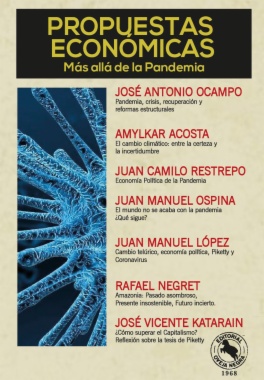
Estás filtrando por
Se encontraron 3402 resultados en recursos

Compartir este contenido
Integración de una política de logística inversa en una estación cross docking como estrategia de sostenibilidad empresarial de una cadena de suministro inteligente
Copia el enlace o compártelo en redes sociales

Modelo de gestión del conocimiento, enmarcado por ITIL, TOGAF y COBIT, mediante una perspectiva conceptual del servicio, para la microempresa “Multimedia Indépendant”
Compartir este contenido
Modelo de gestión del conocimiento, enmarcado por ITIL, TOGAF y COBIT, mediante una perspectiva conceptual del servicio, para la microempresa “Multimedia Indépendant”
Copia el enlace o compártelo en redes sociales

Ejes estratégicos para la gestión ambiental de los humedales interiores de Bogotá D.C, con enfoque del buen vivir estudio de caso humedales: La Conejera, Santa María Del Lago Y El Burro
Compartir este contenido
Ejes estratégicos para la gestión ambiental de los humedales interiores de Bogotá D.C, con enfoque del buen vivir estudio de caso humedales: La Conejera, Santa María Del Lago Y El Burro
Copia el enlace o compártelo en redes sociales

Identificación de los factores asociados al conflicto socio-ecológico en Buenaventura, Colombia
Compartir este contenido
Identificación de los factores asociados al conflicto socio-ecológico en Buenaventura, Colombia
Copia el enlace o compártelo en redes sociales
Comentarios y propuestas a la actual distribución de los recursos públicos entre las regiones colombianas: informe-ponencia
Compartir este contenido
Comentarios y propuestas a la actual distribución de los recursos públicos entre las regiones colombianas: informe-ponencia
Copia el enlace o compártelo en redes sociales
Régimen económico: libertad de empresa, competencia económica, monopolios e intervención del estado
Compartir este contenido
Régimen económico: libertad de empresa, competencia económica, monopolios e intervención del estado
Copia el enlace o compártelo en redes sociales
Hacienda pública
Compartir este contenido
Hacienda pública
Copia el enlace o compártelo en redes sociales

Propuestas Económicas
Compartir este contenido
Propuestas Económicas
Copia el enlace o compártelo en redes sociales
Informe de Coyuntura Económica Regional - Norte de Santander 2006 I Semestre
Compartir este contenido
Informe de Coyuntura Económica Regional - Norte de Santander 2006 I Semestre
Copia el enlace o compártelo en redes sociales
Informe de Coyuntura Económica Regional - Tolima 2007
Compartir este contenido
Informe de Coyuntura Económica Regional - Tolima 2007
Copia el enlace o compártelo en redes sociales
Selecciona las Colecciones en las que vas a añadir el contenido
Para consultar los contenidos añadidos busca la opción Tus colecciones en el menú principal o en Mi perfil.
